Idea by
Dilara Demiralp
Beril Demirel
Call for ideas 2021
41°00'27.4"N 28°54'50.1"E
41°00'27.4"N 28°54'50.1"E
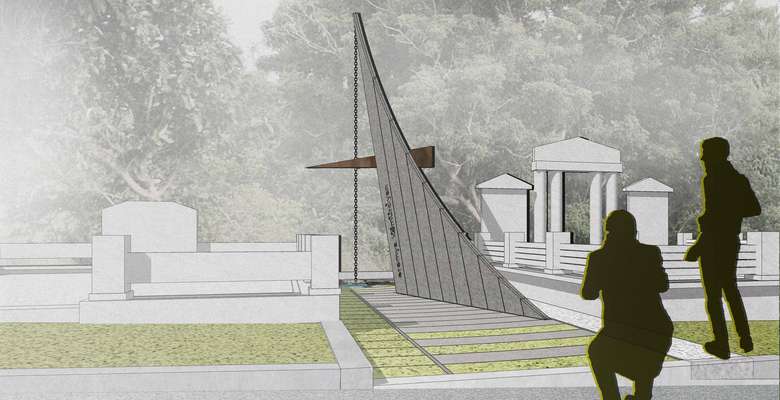
- New alliances
Eremia Chelebi Komurjian (1637-1695) was a prominent figure of the Armenian historiography. He lived and worked in the Ottoman Empire and was one of key personalities of the Istanbul's Armenian community of the time. It is not known exactly where he was buried in the cemetery. The purpose of the project, which is designed as a sundial is to create the shadow can form a cross trace on the ground. This trace, like a marker, seeks that the place where Komurjian lies is "somewhere here". It can be thought that Komurjian's tomb worked as a compass and map. With the QR codes placed, it is aimed to create a network between different important graves of Istanbul and to include them in the route of the city traveler.
The tomb can be considered as an outdoor landscape element. Therefore, while sundial and water element represent important meanings, they can also communicate with light, climate and landscape. They make time visible with shadow movements.

Development diagram

Bird's-eye view of the grave

Structural section of the stone cladding grave
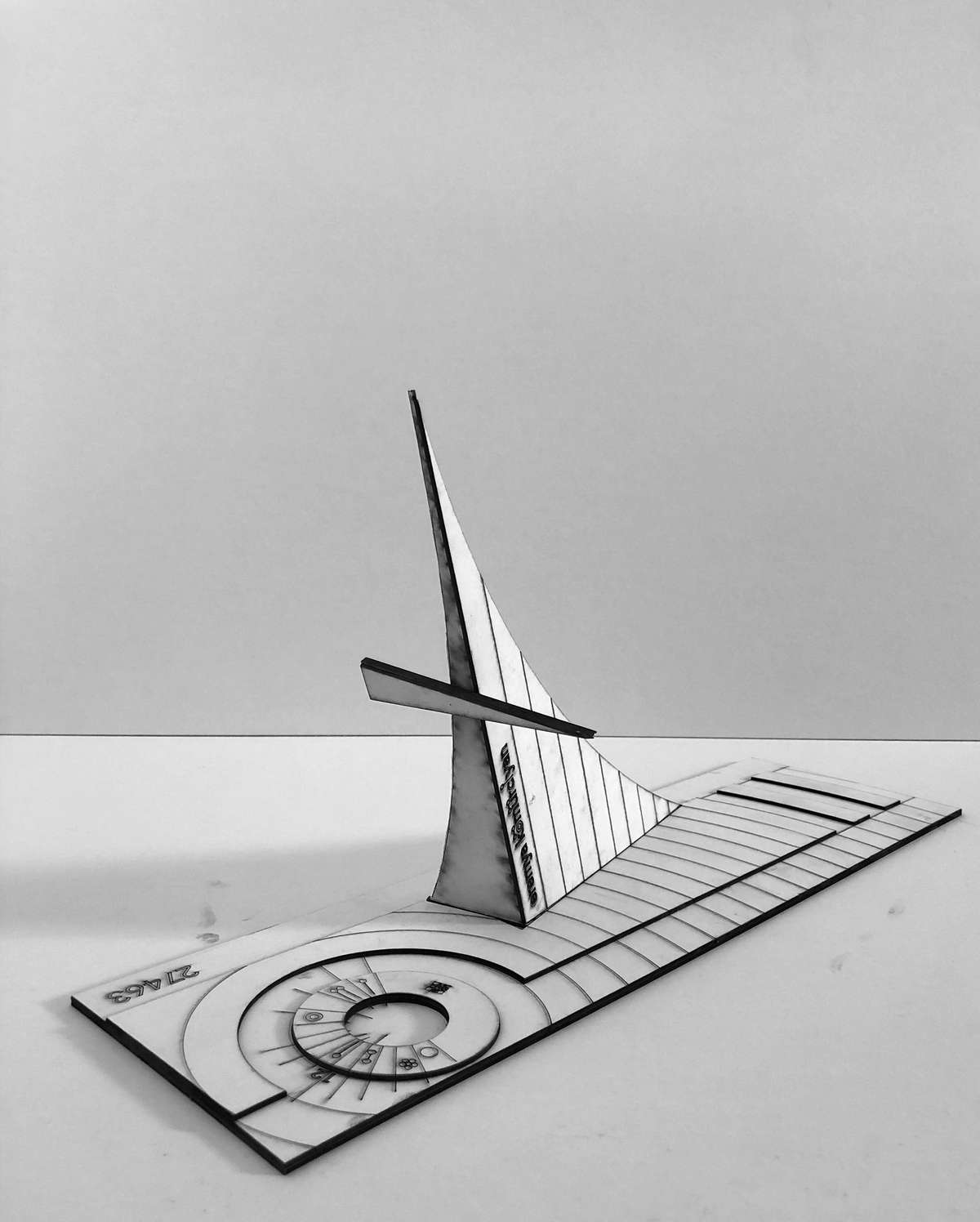
Physical model of the grave design

Physical model of the grave design
41°00'27.4"N 28°54'50.1"E
41°00'27.4"N 28°54'50.1"E

- New alliances
Eremia Chelebi Komurjian (1637-1695) was a prominent figure of the Armenian historiography. He lived and worked in the Ottoman Empire and was one of key personalities of the Istanbul's Armenian community of the time. It is not known exactly where he was buried in the cemetery. The purpose of the project, which is designed as a sundial is to create the shadow can form a cross trace on the ground. This trace, like a marker, seeks that the place where Komurjian lies is "somewhere here". It can be thought that Komurjian's tomb worked as a compass and map. With the QR codes placed, it is aimed to create a network between different important graves of Istanbul and to include them in the route of the city traveler.
The tomb can be considered as an outdoor landscape element. Therefore, while sundial and water element represent important meanings, they can also communicate with light, climate and landscape. They make time visible with shadow movements.
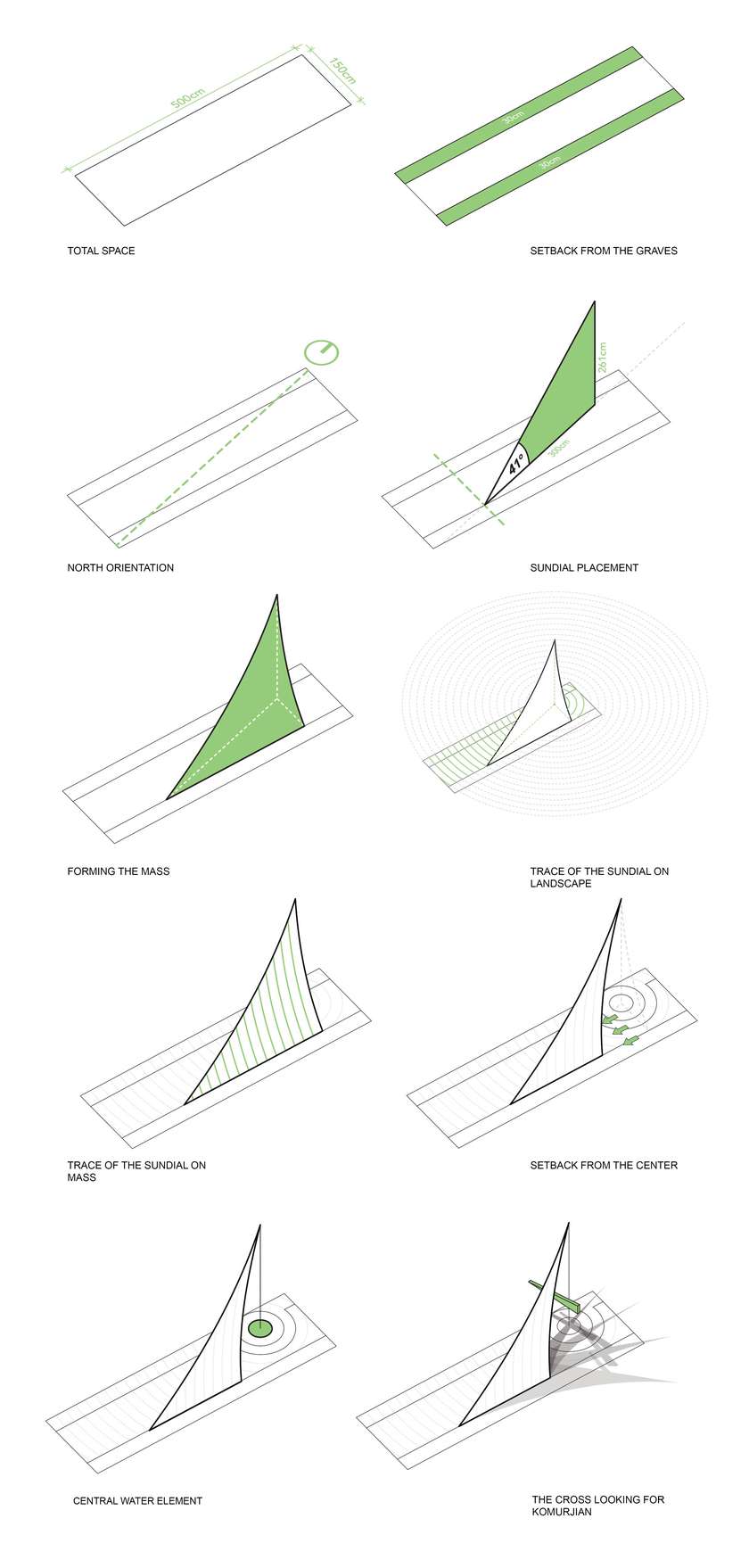
Development diagram
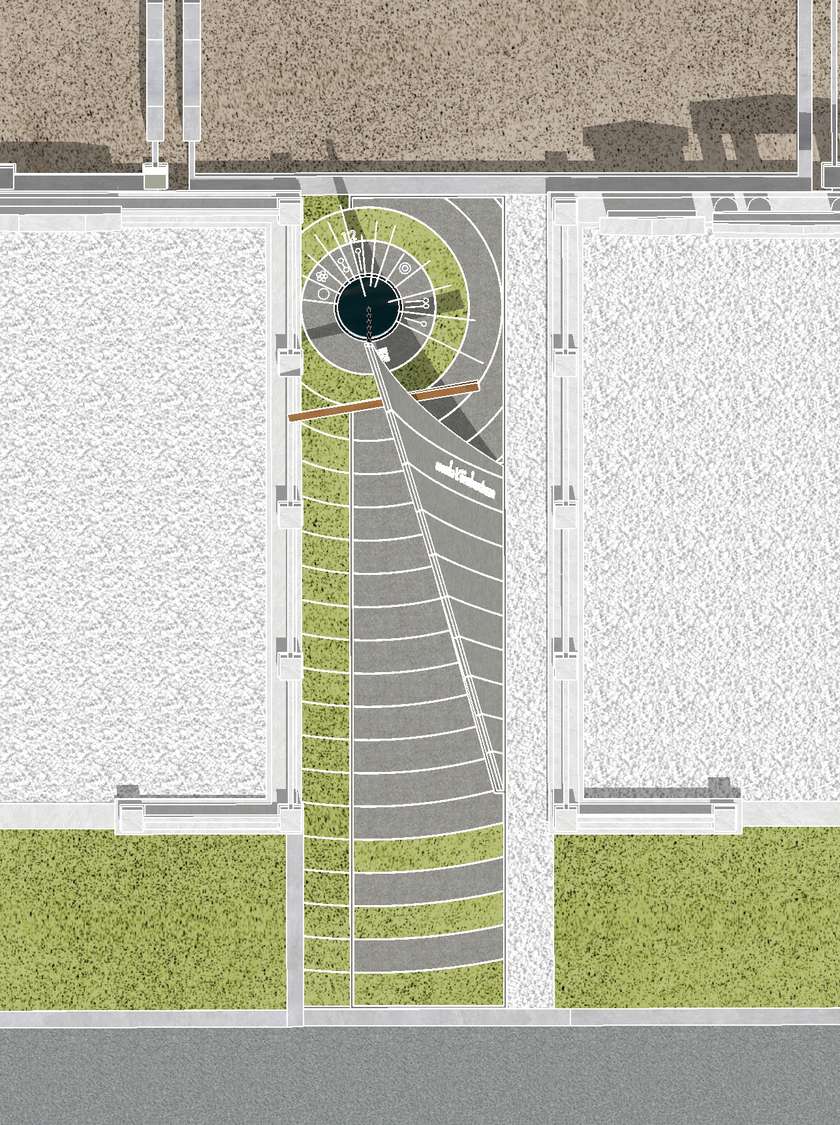
Bird's-eye view of the grave

Structural section of the stone cladding grave
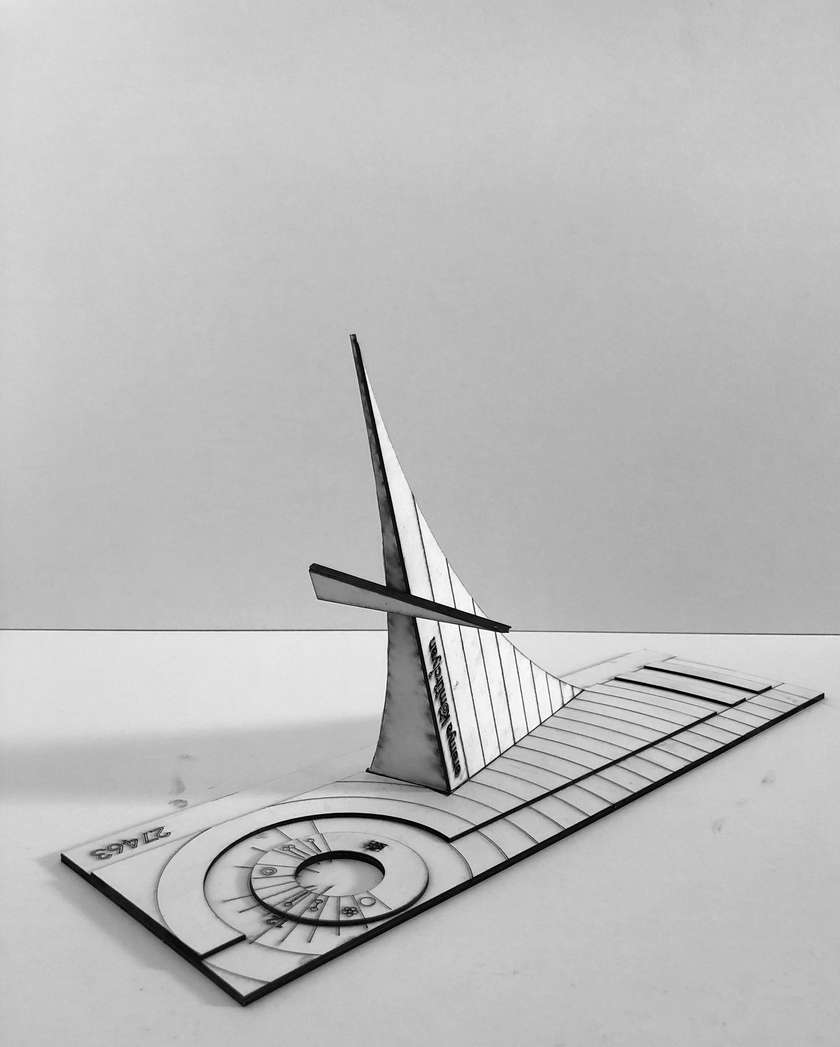
Physical model of the grave design
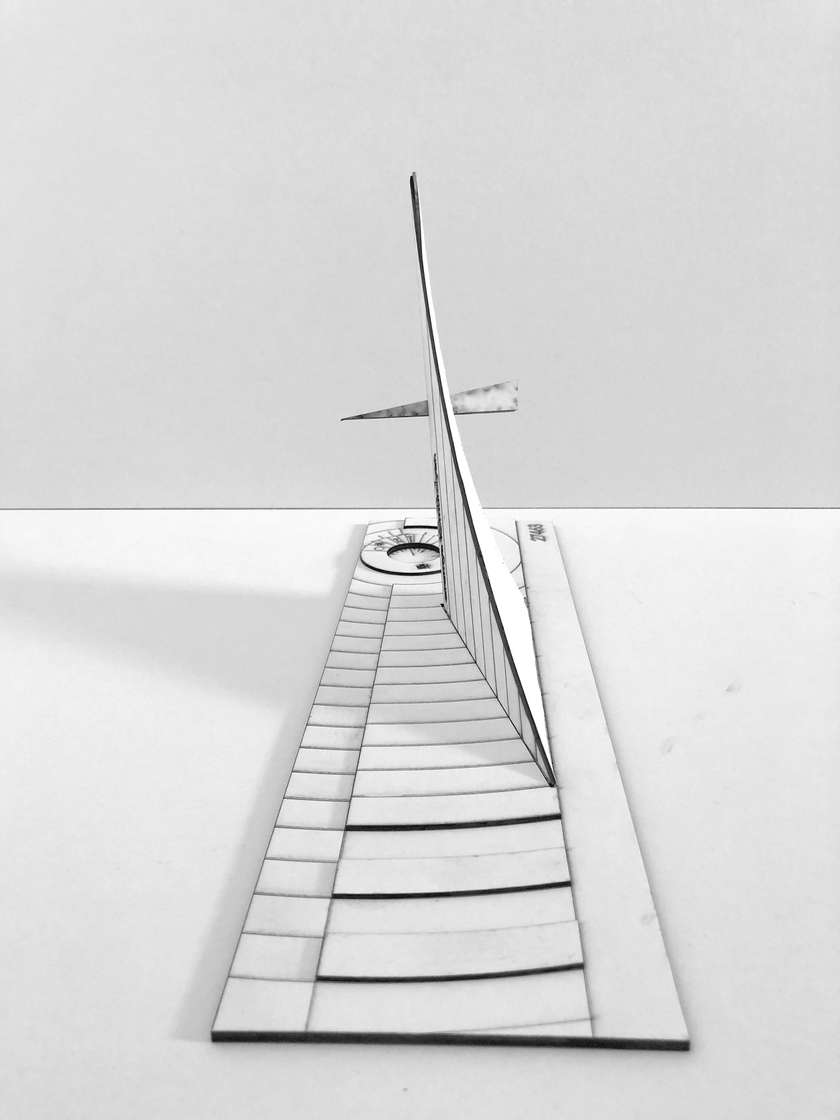
Physical model of the grave design